ReLoki: A Light-Weight Relative Localization System Based on UWB Antenna Arrays
Abstract
:1. Introduction
1.1. Related Works
1.2. Contributions
- Hardware design of UWB module that supports interface with any four-element UWB antenna array that enables full 3D localization. Design details in GitHub https://github.com/denjos007/ReLoki-pub (accessed on 20 August 2024).
- First proof-of-concept 3D AoA estimation in light-weight hardware (weight: 65 g; dimensions: ).
- Design and validation of UWB antenna for ReLoki system.
- Analysis of the localization performance of RTA, ROA, and USA antennas.
- Full-scale proof-of-concept experiments for a fully onboard relative sensing solution with two moving and one static agent, achieving an error tolerance of less than 25 cm for range estimates up to a range of and for bearing estimates in the operational range of elevation.
- Full-scale proof-of-concept experiments for ad hoc beacon–tag system with two beacons and one tag showing a maximum localization error of in an indoor room of .
2. Multi-Agent Relative Localization via UWB
3. ReLoki Proof of Concept
3.1. Relative Localization Using Four-Antenna Array
3.1.1. RTA Transformation
3.1.2. ROA Transformation
3.1.3. USA Transformation
3.1.4. Normalization
| Algorithm 1 Angle-of-Arrival (AoA) Estimation. |
Input phase of arrival at each antenna Output unit vector bearing of neighbor |
3.2. Messaging Protocol
3.3. ReLoki Hardware Platform
3.3.1. Antenna Design
3.3.2. Controller Design
3.4. Muti-Agent and Multi-Beacon Support
4. Performance Analysis and Experiments
4.1. Covariance Maps
4.1.1. RTA Antenna
4.1.2. ROA Antenna
4.1.3. USA Antenna
4.2. Maximum Operating Frequency
4.3. Robot Localization
4.3.1. RTA Antenna
4.3.2. USA Antenna
5. Conclusions
Author Contributions
Funding
Institutional Review Board Statement
Informed Consent Statement
Data Availability Statement
Acknowledgments
Conflicts of Interest
References
- Chen, S.; Yin, D.; Niu, Y. A Survey of Robot Swarms’ Relative Localization Method. Sensors 2022, 22, 4424. [Google Scholar] [CrossRef] [PubMed]
- Guler, S.; Abdelkader, M.; Shamma, J.S. Peer-to-Peer Relative Localization of Aerial Robots with Ultrawideband Sensors. IEEE Trans. Control Syst. Technol. 2021, 29, 1981–1996. [Google Scholar]
- Li, S.; Coppola, M.; De Wagter, C.; de Croon, G.C.H.E. An autonomous swarm of micro flying robots with range-based relative localization. arXiv 2020, arXiv:2003.05853. [Google Scholar]
- Barral, V.; Suárez-Casal, P.; Escudero, C.J.; García-Naya, J.A. Multi-Sensor Accurate Forklift Location and Tracking Simulation in Industrial Indoor Environments. Electronics 2019, 8, 1152. [Google Scholar] [CrossRef]
- Dotlic, I.; Connell, A.; Ma, H.; Clancy, J.; McLaughlin, M. Angle of arrival estimation using decawave DW1000 integrated circuits. In Proceedings of the 2017 14th Workshop on Positioning, Navigation and Communications (WPNC), Bremen, Germany, 25–26 October 2017; Volume 2018, pp. 1–6. [Google Scholar]
- Luo, J.; Zhang, J.; Yang, H.; Guan, Y. All-Directional DOA Estimation for Ultra-Wideband Regular Tetrahedral Array Using Wrapped PDoA. Sensors 2022, 22, 1532. [Google Scholar] [CrossRef] [PubMed]
- Duckworth, G.L.; Gilbert, D.C.; Barger, J.E. Acoustic counter-sniper system. Int. Soc. Opt. Photonics 1997, 2938, 262–275. [Google Scholar] [CrossRef]
- Hioka, Y.; Hamada, N. Separate estimation of azimuth and elevation DOA using microphones located at apices of regular tetrahedron. In Proceedings of the 2004 IEEE International Conference on Acoustics, Speech, and Signal Processing, Montreal, QC, Canada, 17–21 May 2004; Volume 2, p. ii-137. [Google Scholar] [CrossRef]
- Datta, U.; Otnes, R.; Lucas, C. Bearing estimation using small tetrahedral passive hydrophone array. In Proceedings of the OCEANS 2010 MTS/IEEE SEATTLE, Seattle, WA, USA, 20–23 September 2010; pp. 1–8. [Google Scholar] [CrossRef]
- Freire, I.L.; Apolinário, J.A. DoA of gunshot signals in a spatial microphone array: Performance of the interpolated Generalized Cross-Correlation method. In Proceedings of the 2011 Argentine School of Micro-Nanoelectronics, Technology and Applications, Buenos Aires, Argentina, 11–12 August 2011; pp. 1–6. [Google Scholar]
- Zhao, M.; Chang, T.; Arun, A.; Ayyalasomayajula, R.; Zhang, C.; Bharadia, D. ULoc-Low-Power, Scalable and cm-Accurate UWB-Tag Localization and Tracking for Indoor Applications. Proc. ACM Interact. Mob. Wearable Ubiquitous Technol. 2021, 5, 31. [Google Scholar]
- Heydariaan, M.; Dabirian, H.; Gnawali, O. AnguLoc: Concurrent Angle of Arrival Estimation for Indoor Localization with UWB Radios. In Proceedings of the 2020 16th International Conference on Distributed Computing in Sensor Systems (DCOSS), Marina del Rey, CA, USA, 25–27 May 2020; pp. 112–119. [Google Scholar]
- Smaoui, N.; Heydariaan, M.; Gnawali, O. Single-antenna AOA estimation with UWB radios. In Proceedings of the 2021 IEEE Wireless Communications and Networking Conference (WCNC), Nanjing, China, 29 March–1 April 2021. [Google Scholar]
- Nguyen, T.H.; Nguyen, T.M.; Xie, L. Range-Focused Fusion of Camera-IMU-UWB for Accurate and Drift-Reduced Localization. IEEE Robot. Autom. Lett. 2021, 6, 1678–1685. [Google Scholar]
- Martel, F.M.; Sidorenko, J.; Bodensteiner, C.; Arens, M.; Hugentobler, U. Unique 4-DOF relative pose estimation with six distances for UWB/V-SLAM-based devices. Sensors 2019, 19, 4366. [Google Scholar] [CrossRef] [PubMed]
- Cossette, C.C.; Shalaby, M.; Saussie, D.; Forbes, J.R.; Le Ny, J. Relative Position Estimation between Two UWB Devices with IMUs. IEEE Robot. Autom. Lett. 2021, 6, 4313–4320. [Google Scholar]
- Cao, Z.; Liu, R.; Yuen, C.; Athukorala, A.; Kiat Ng, B.K.; Mathanraj, M.; Tan, U.X. Relative Localization of Mobile Robots with Multiple Ultra-WideBand Ranging Measurements. In Proceedings of the 2021 IEEE/RSJ International Conference on Intelligent Robots and Systems (IROS), Prague, Czech Republic, 27 September–1 October 2021; pp. 5857–5863. [Google Scholar]
- Fishberg, A.; How, J.P. Multi-Agent Relative Pose Estimation with UWB and Constrained Communications. In Proceedings of the 2022 IEEE/RSJ International Conference on Intelligent Robots and Systems (IROS), Kyoto, Japan, 23–27 October 2022; pp. 778–785. [Google Scholar]
- Phalak, Y.; Chiddarwar, S. Tetrahedron and Euclidean Distance Based Decentralized Relative Localization for Multi-Robot Systems. In Proceedings of the 2020 IEEE International Conference for Innovation in Technology (INOCON), Bangluru, India, 6–8 November 2020. [Google Scholar]
- Kohlbacher, A.; Eliasson, J.; Acres, K.; Chung, H.; Barca, J.C. A low cost omnidirectional relative localization sensor for swarm applications. In Proceedings of the 2018 IEEE 4th World Forum on Internet of Things (WF-IoT), Singapore, 5–8 February 2018; pp. 694–699. [Google Scholar]
- Xianjia, Y.; Qingqing, L.; Queralta, J.P.; Heikkonen, J.; Westerlund, T. Cooperative UWB-based localization for outdoors positioning and navigation of UAVs aided by ground robots. arXiv 2021, arXiv:2104.00302v1. [Google Scholar]
- Florio, A.; Avitabile, G.; Talarico, C.; Coviello, G. A Reconfigurable Full-Digital Architecture for Angle of Arrival Estimation. IEEE Trans. Circuits Syst. Regul. Pap. 2024, 71, 1443–1455. [Google Scholar]
- Chen, Z.; Gokeda, G.; Yu, Y. Introduction to Direction-of-Arrival Estimation; Artech House: Norwood, MA, USA, 2010. [Google Scholar]
- Tiemann, J.; Fuhr, O.; Wietfeld, C. CELIDON: Supporting first responders through 3D AOA-based UWB Ad-hoc localization. In Proceedings of the 2020 16th International Conference on Wireless and Mobile Computing, Networking and Communications (WiMob), Thessaloniki, Greece, 12–14 October 2020. [Google Scholar]
- Mathew, J.P.; Nowzari, C. ReLoki: Infrastructure-free Distributed Relative Localization using On-board UWB Antenna Arrays. arXiv 2024, arXiv:2401.16599. [Google Scholar]
- Zuo, L.; Pan, J. Accurate 2-D AOA Estimation and Ambiguity Resolution for a Single Source under Fixed Uniform Circular Arrays. Int. J. Antennas Propag. 2017. [Google Scholar] [CrossRef]
- APS013 The Implementation of Two-Way Ranging with the DW1000. Available online: https://www.qorvo.com/products/d/da008448 (accessed on 20 August 2024).
- Malajner, M.; Planinšič, P.; Gleich, D. UWB ranging accuracy. In Proceedings of the 2015 International Conference on Systems, Signals and Image Processing (IWSSIP), London, UK, 10–12 September 2015; pp. 61–64. [Google Scholar] [CrossRef]
- Chantaweesomboon, W.; Suwatthikul, C.; Manatrinon, S.; Athikulwongse, K.; Kaemarungsi, K.; Ranron, R.; Suksompong, P. On performance study of UWB real time locating system. In Proceedings of the International Conference of Information and Communication Technology for Embedded Systems (IC-ICTES), Bangkok, Thailand, 20–22 March 2016; pp. 19–24. [Google Scholar] [CrossRef]
- Jiménez, A.R.; Seco, F. Improving the accuracy of decawave’s uwb mdek1001 location system by gaining access to multiple ranges. Sensors 2021, 21, 1787. [Google Scholar] [CrossRef] [PubMed]

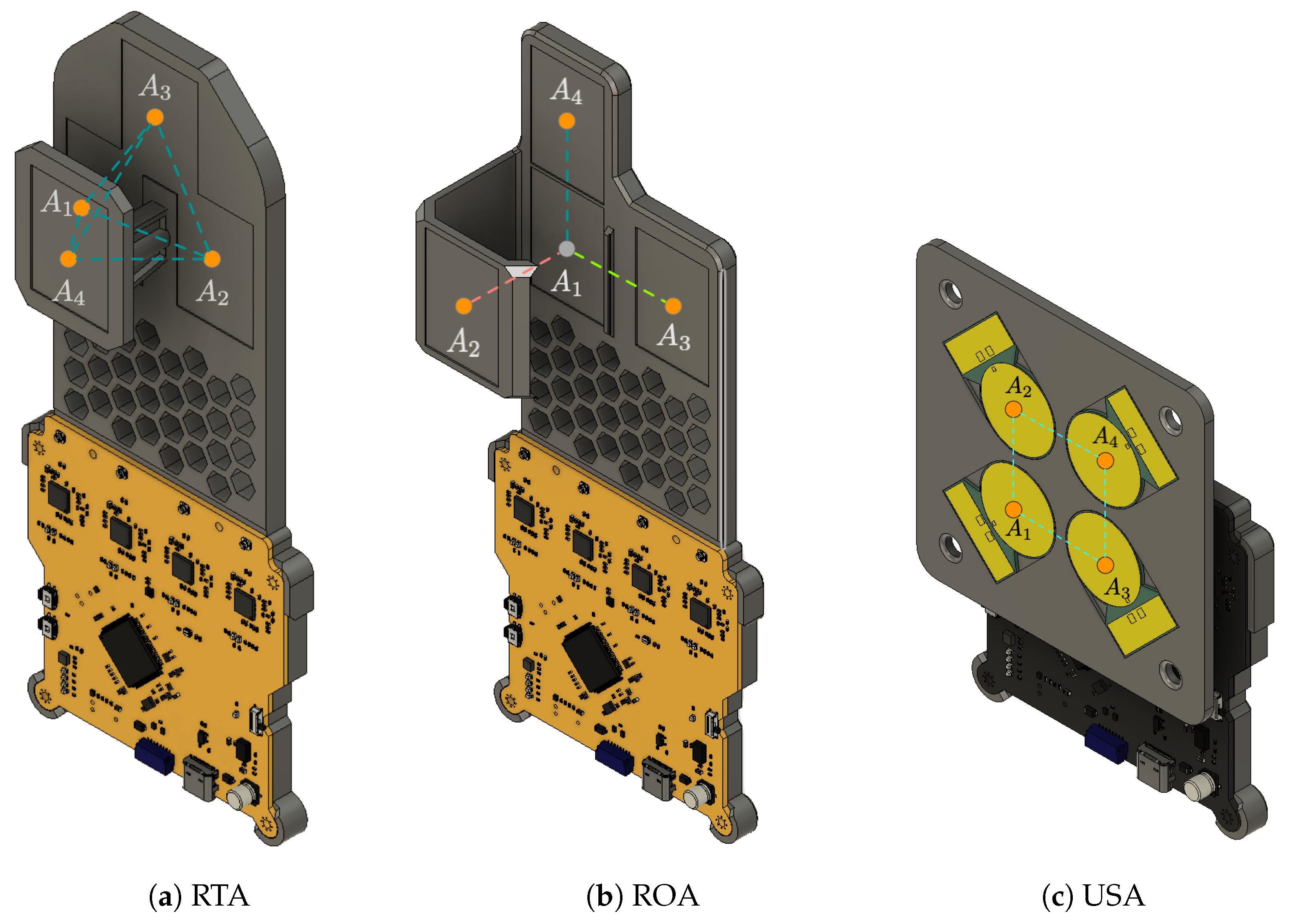
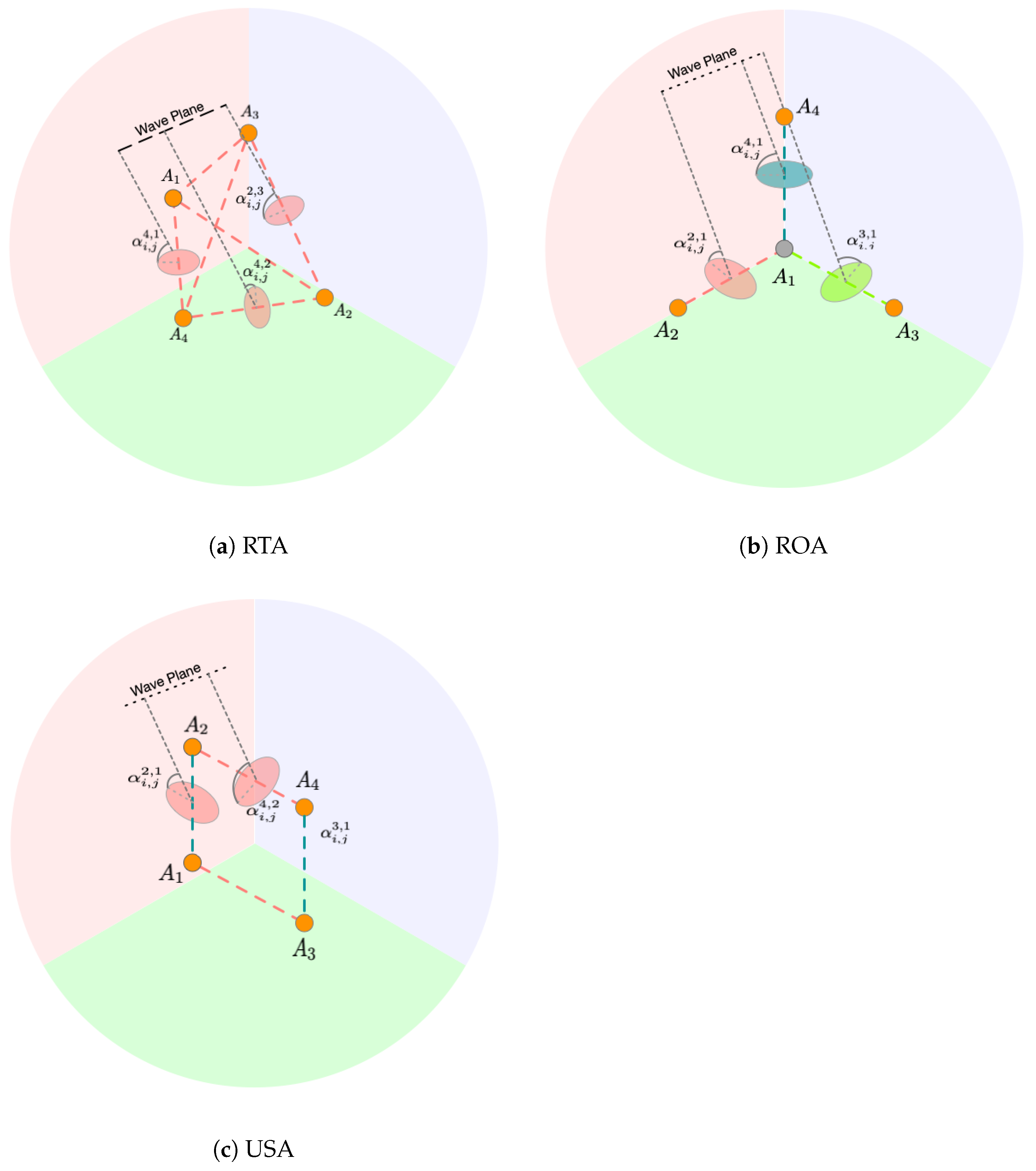

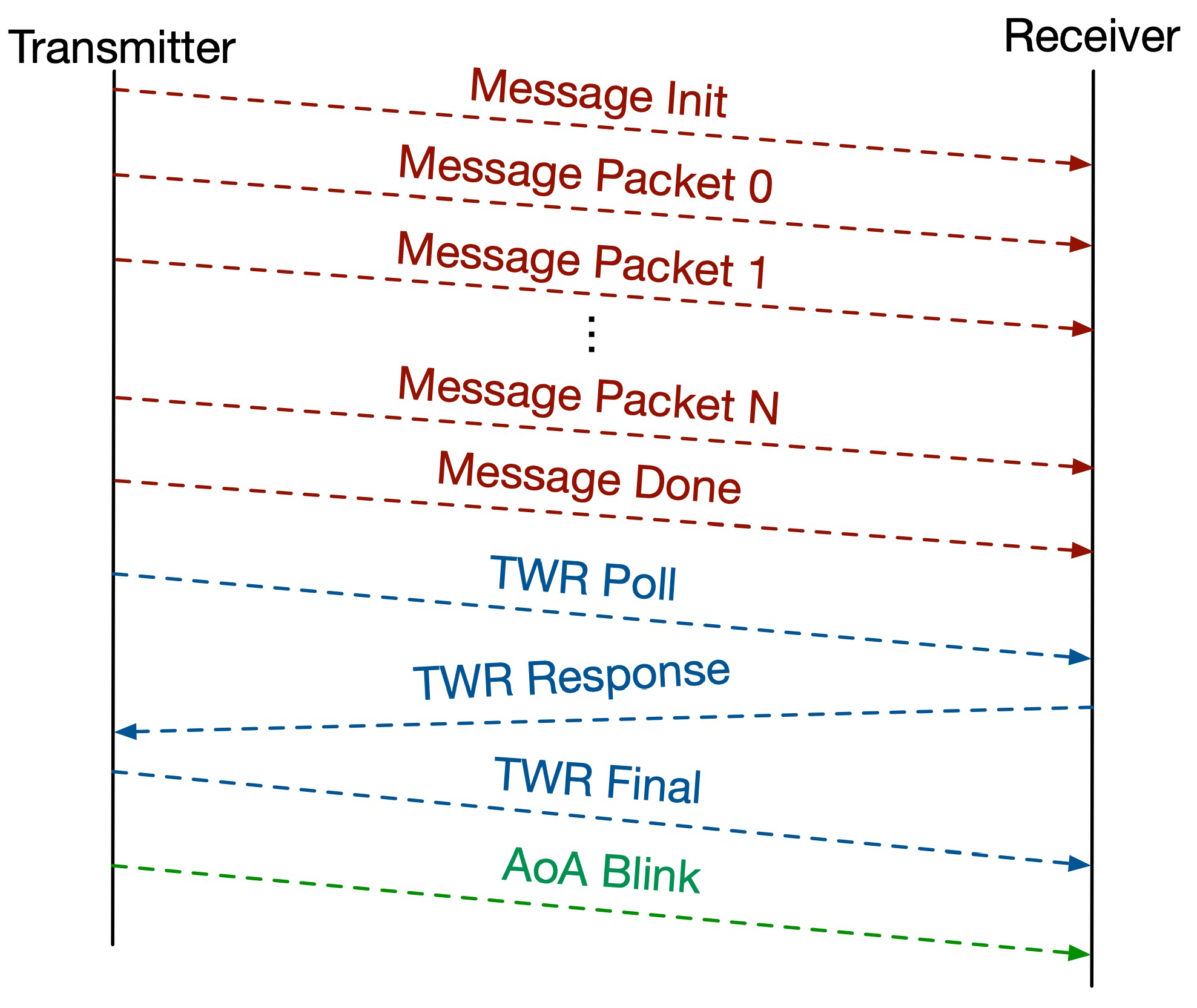
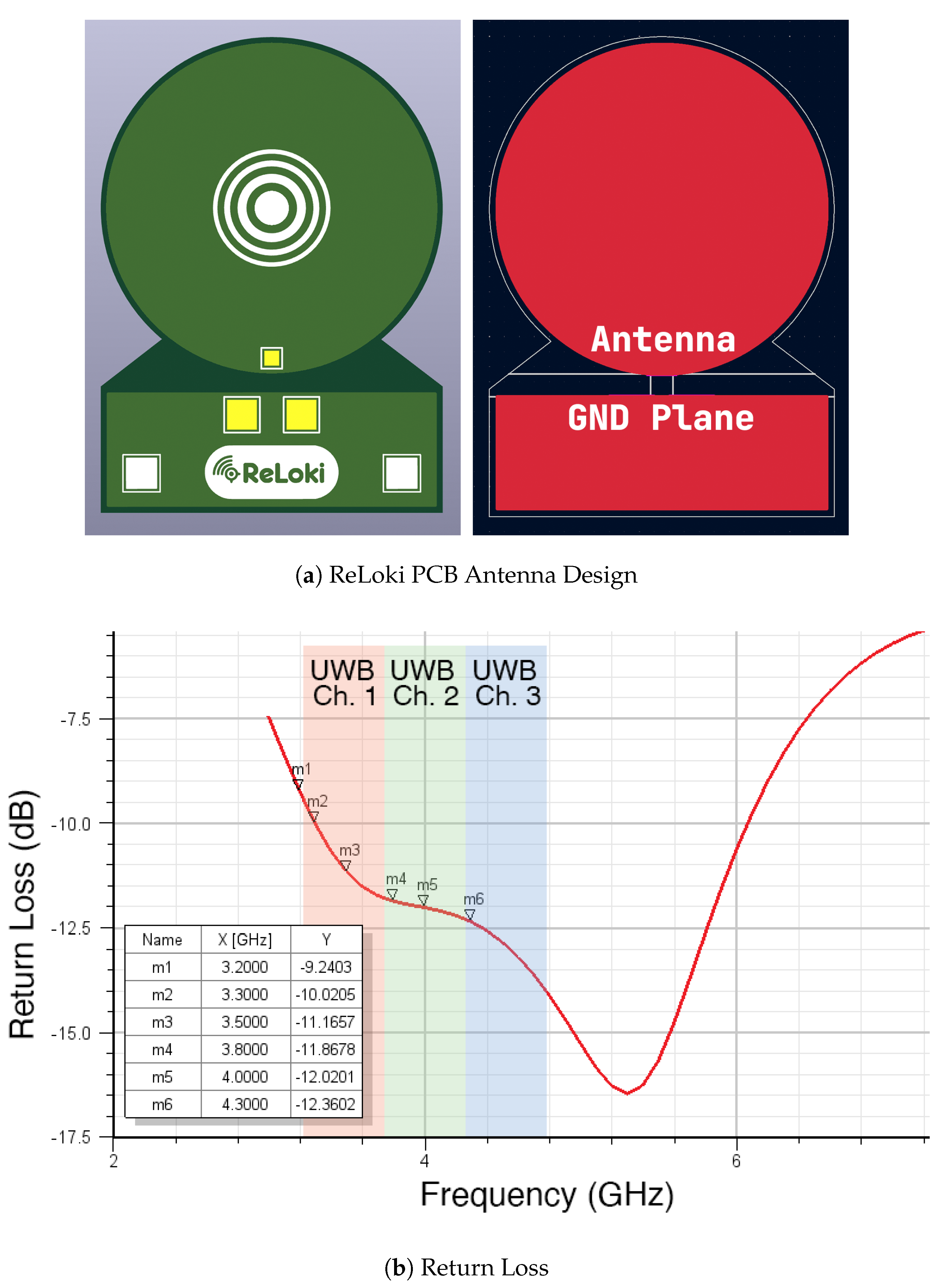



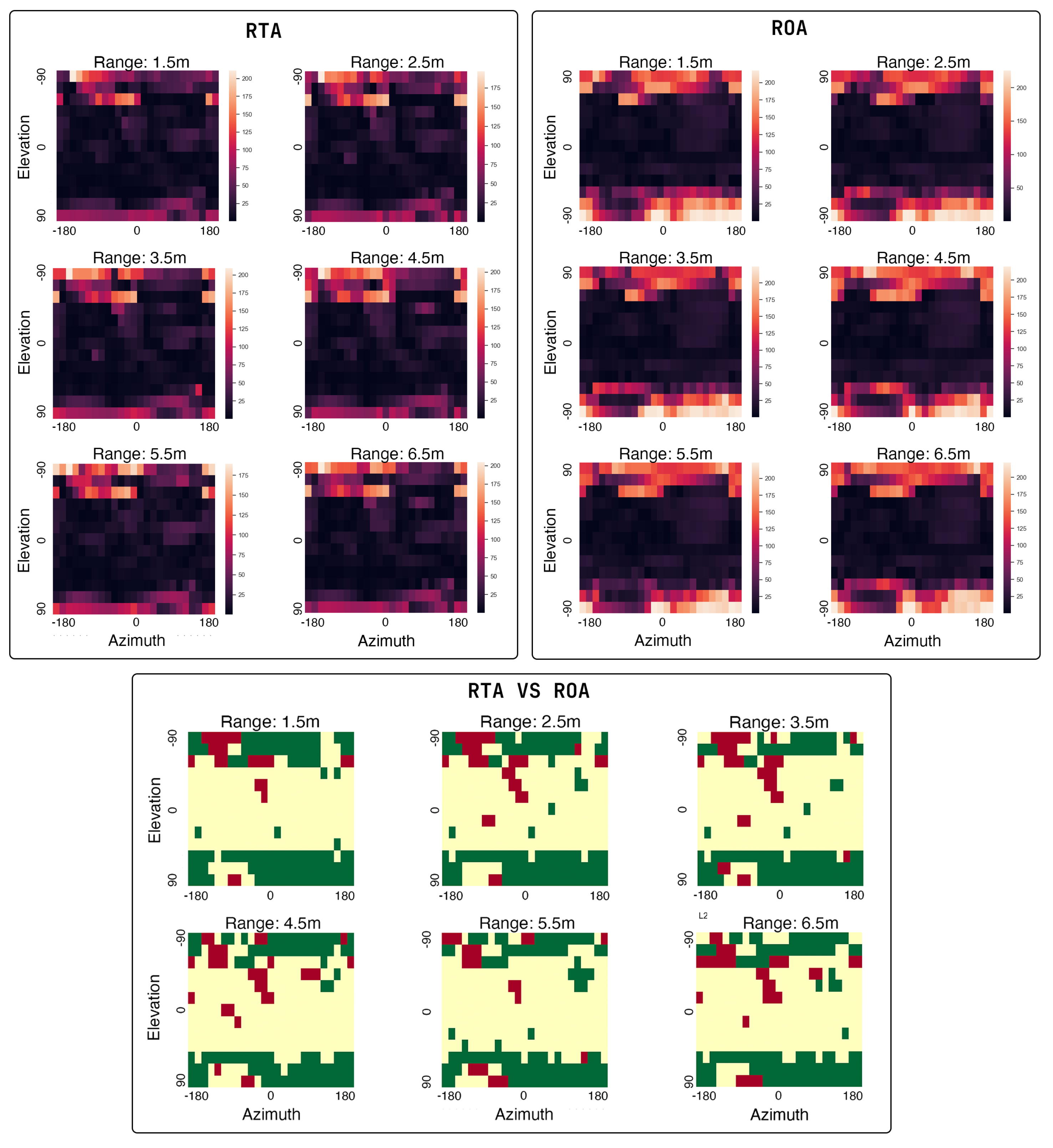

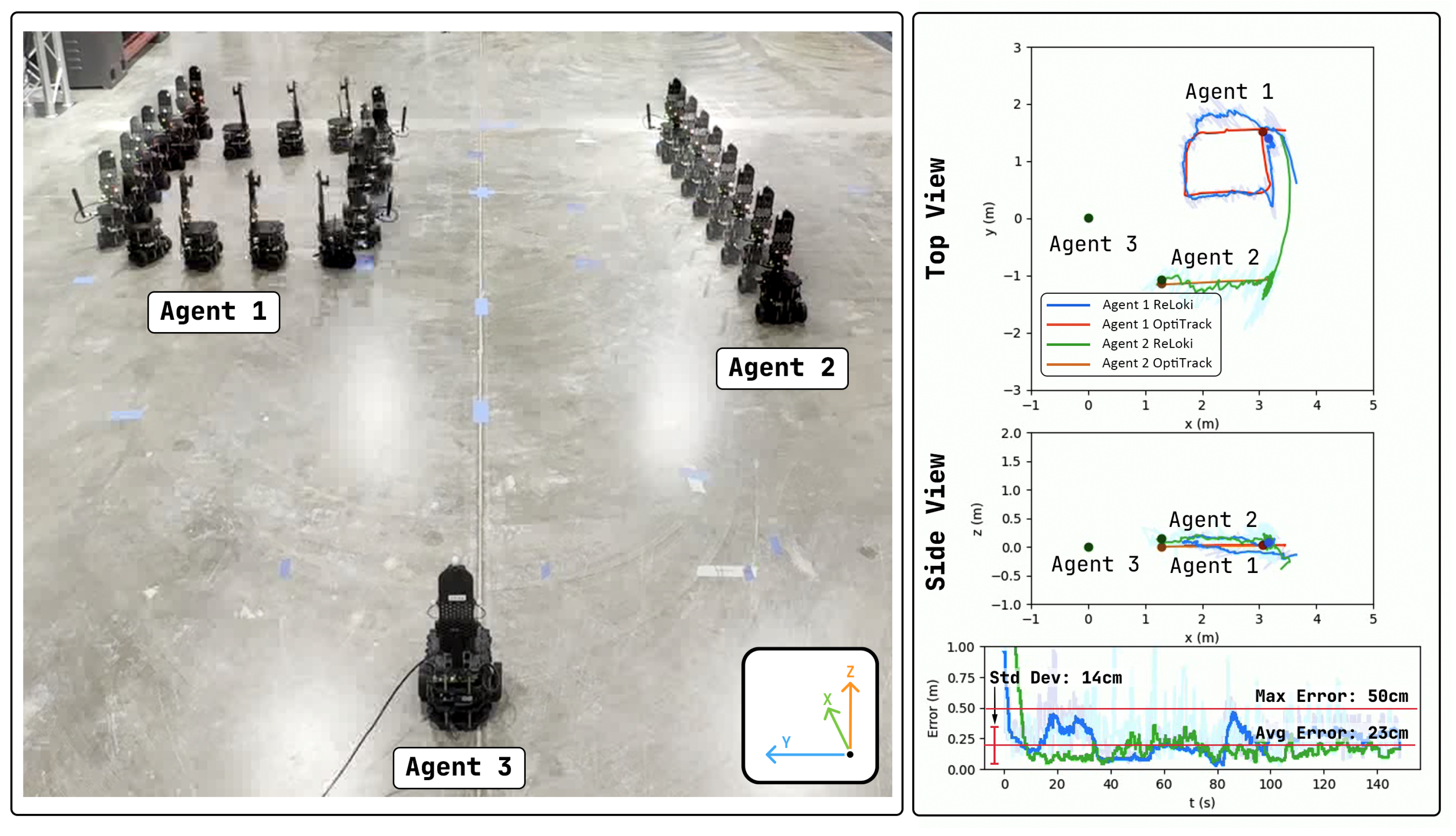
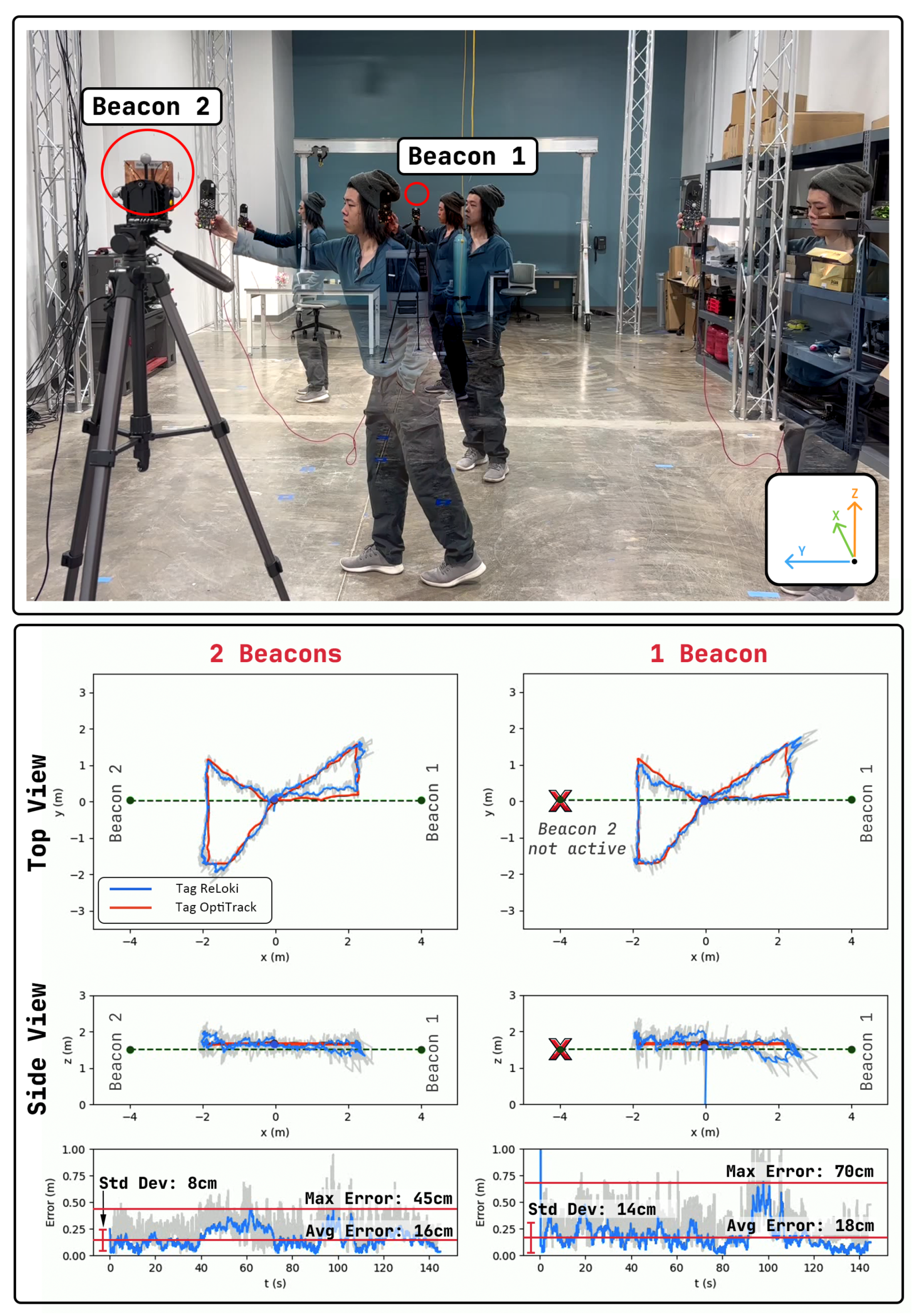
| Sampling Rate | N. Agents | Max. Error (cm) | Avg. Error (cm) | Std. Dev. (cm) |
|---|---|---|---|---|
| 10 | 3 | 50 | 23 | 14 |
| 5 | 5 | 48 | 26 | 21 |
| 2 | 10 | 52 | 31 | 29 |
| 1 | 20 | 58 | 36 | 32 |
Disclaimer/Publisher’s Note: The statements, opinions and data contained in all publications are solely those of the individual author(s) and contributor(s) and not of MDPI and/or the editor(s). MDPI and/or the editor(s) disclaim responsibility for any injury to people or property resulting from any ideas, methods, instructions or products referred to in the content. |
© 2024 by the authors. Licensee MDPI, Basel, Switzerland. This article is an open access article distributed under the terms and conditions of the Creative Commons Attribution (CC BY) license (https://creativecommons.org/licenses/by/4.0/).
Share and Cite
Prince Mathew, J.; Nowzari, C. ReLoki: A Light-Weight Relative Localization System Based on UWB Antenna Arrays. Sensors 2024, 24, 5407. https://doi.org/10.3390/s24165407
Prince Mathew J, Nowzari C. ReLoki: A Light-Weight Relative Localization System Based on UWB Antenna Arrays. Sensors. 2024; 24(16):5407. https://doi.org/10.3390/s24165407
Chicago/Turabian StylePrince Mathew, Joseph, and Cameron Nowzari. 2024. "ReLoki: A Light-Weight Relative Localization System Based on UWB Antenna Arrays" Sensors 24, no. 16: 5407. https://doi.org/10.3390/s24165407





